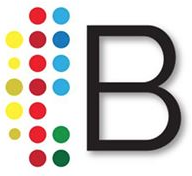We have looked at how companies can monetize their social media with Social Commerce and we've introduced you to Famecount where you can find the popularity of brands, now with help from Vivald-iPartners we examine how it all fits together to create Social Currency. The report Social Currency: Why brands need to build and nurture social currency explains that "today, one of the most important strengths of a brand is its social currency, the extent to which people share the brand or information about the brand with others as part of their everyday social lives." Social of media has changed how brands are built. "Social media sites are actively used today by major brands to strengthen customer service, introduce or co-create new products and entertain people." A high social currency commands a price premium and creates brand loyalty, but it takes more than just buzz. "Companies need to learn how to make their brands more social, and how to interact in new ways with their customers.
The most interesting part of the paper explains that although there are 6 components of social currency (affiliation, conversation, utility, advocacy, information and identity), brands don't need high scores in all 6 to have a high currency. Different categories of products have different needs. Categories like fast food and beer seem to be less dependent on providing a strong sense of community, whereas airlines and IT rely on their user-base to exchange news, hints, and other information.




